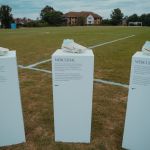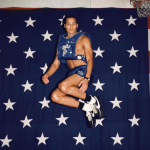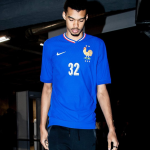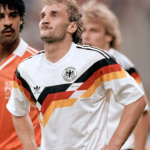
The long road to bring football home
We were Nike guests in London for the Euro 2022 final
August 4th, 2022
At the exact moment when the scoreboard illuminated revealing the total number of spectators present at Wembley for the European Championship Final between the host Lionesses and Germany, the audience responded with thunderous applause, surpassed only by that reserved for the players in white jerseys. The 87,192 in the stands of the facility that traditionally hosts England's national team matches is the most achieved in any match in the history of the continental competition, surpassing a record that had stood for 58 years.An exceptional crowd, which propelled Sarina Wiegman's girls to the conquest of the title that had been missing in the international arena for 56 years, bringing football back home after last year's disappointment of the men's selection.
And perhaps it was he Euro 2020 result that further tightened the English people around their female footballers, who became heroines at home and were able to break what seemed to have become a veritable curse. Indeed, English football in recent decades has struggled to establish itself internationally, despite an unparalleled tradition and a very strong movement that coincides with the most powerful league in the world, as it often ends in bitter defeats. Like precisely the one suffered at home by Italy, which had choked in their throats the chant "It's Coming Home" that has become an authentic catchphrase singed not caring too much about superstition.
Sunday afternoon, "Three Lions," the song recorded in 1996 by the British supergroup The Lightning Seeds, could finally be sung onto the Wembley pitch as on the field the English players celebrated by waving Nike flags emblazoned with the words Home. Squeezed inside the embrace of an entire nation, they achieved a feat that marks a new era of women's football. Or perhaps better said, just football, returned to its universal dimension and no longer bound by sectarian and gender divisions.
The most striking aspect, arriving at a sold-out stadium already for days, is the amount of fans of all generations. Families with children already wearing the jersey with the Three Lions, men in the Nike signature uniform worn by the girls during this European Championship, and the colorful people of English football gathered in the name of Beth Mead, Lauren Hemp, and Lucy Bronze. It was a festive atmosphere that presaged a magical evening that, despite repeated attempts by the German team, Chloe Kelly's kick into the small area in extra time finally blossomed. Her almost incredulous run to midfield, taking off her jersey in imitation of Brandi Chastain recalled another historic moment in women's football, the 1999 U.S. World Cup final.
In both cases the two athletes wore Nike jerseys and sports bra, and it is no coincidence that the two national teams will meet again next October for a friendly match also at Wembley that has already sold out in less than 24 hours. It is a demonstration of how women's soccer no longer needs validation and is a movement capable of enthusing an even more cross-sectional audience than men's. And Nike has played a key role in supporting female athletes and federations even when the landscape was not so rosy, pushing an inclusive and positive narrative about the sport. Especially on women's football, which has always been a major interest for the U.S. company and on which it has focused heavily over the years.
A commitment that we were able to feel for ourselves over the weekend, having been guests of Nike in London to discover the Swoosh's new initiatives to make football increasingly accessible, revolutionizing both the technologies and the storytelling around the most beautiful game in the world. Beginning with a tour of the wonderful "Designing the Beautiful Game" exhibition at the Design Museum, which extols the role of visual and technical creativity in defining the various eras of international football, and then trying on the foot of the new Air Zoom Mercurial football shoes in which the Lionesses would take the pitch the following day. An ultra-lightweight yet extremely high-performance model that adapts to every movement of the foot thanks to the innovative Air technology, and defined by a look that matches the first jersey worn by the English players. Indeed, following the motto "look good, play good" that has defined every stage of our stay, the aesthetic created by Nike for the Lionesses helped create a self-confidence that helped them get through a tournament full of pitfalls.
In fact, the long journey that brought the English selection to the throne of Europe does not begin with the opening match of this edition against Austria, which was ruled by a narrow margin thanks to Beth Mead, but goes back to 1921, when women in England weren't allowed from playing football. A ban that lasted for more than fifty years and compromised what was a movement rivaling that of men. And it took another fifty, from the Lost Lionesses' participation in the 1971 Mexican World Cup also recently celebrated by Nike and fashion designer Martine Rose, for what will go down in history as one of the most important events in women's football to be organized in London. One hundred years after women were banned from playing, those same women brought football back home, thus closing a circle that looks more and more like a ball.















